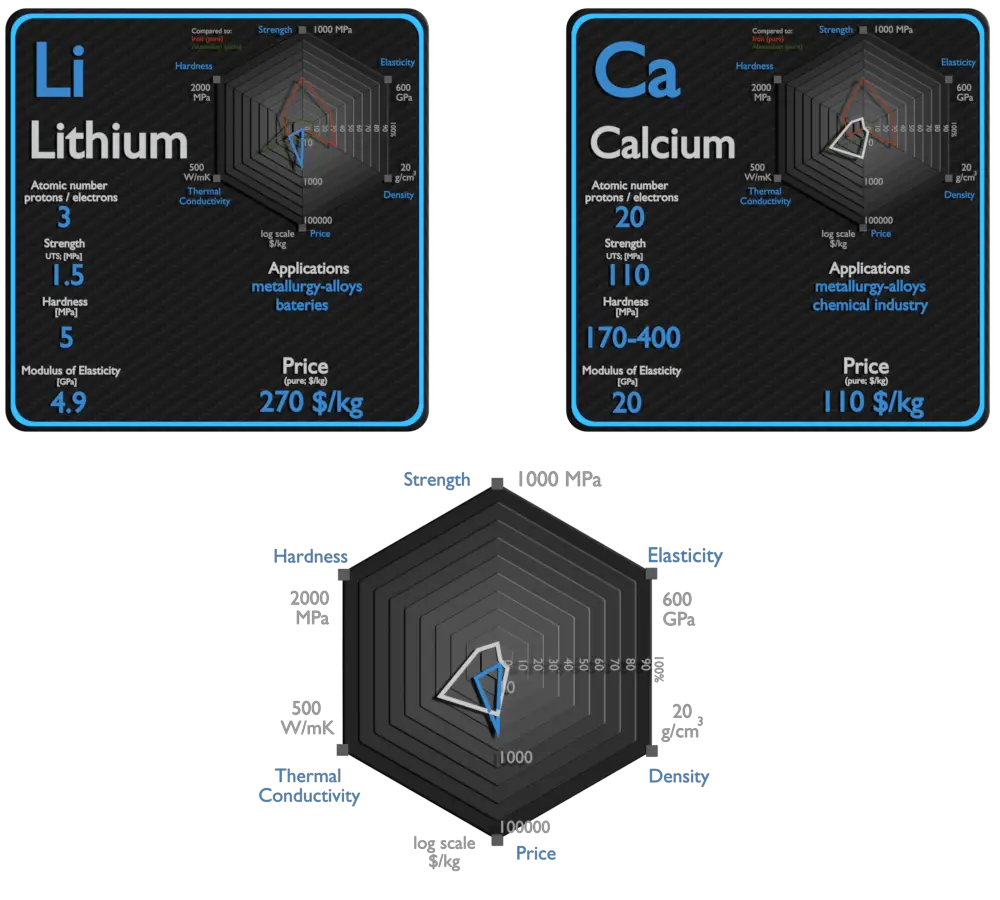This article contains comparison of key thermal and atomic properties of lithium and calcium, two comparable chemical elements from the periodic table. It also contains basic descriptions and applications of both elements. Lithium vs Calcium.

Lithium and Calcium – About Elements


Source: www.luciteria.com
Lithium and Calcium – Applications
Lithium
Lithium has many applications, from lubricating grease, alloying additions in particular for aluminium and magnesium alloys, to glazes for ceramics, and finally, lithium batteries. In particular, lithium is and will continue to play an increasingly important role in the battery-powered clean air future. Lithium batteries are widely used in portable consumer electronic devices, and in electric vehicles ranging from full sized vehicles to radio controlled toys. The term “lithium battery” refers to a family of different lithium-metal chemistries, comprising many types of cathodes and electrolytes but all with metallic lithium as the anode.
Calcium
The largest use of metallic calcium is in steelmaking, due to its strong chemical affinity for oxygen and sulfur. Its oxides and sulfides, once formed, give liquid lime aluminate and sulfide inclusions in steel which float out. Calcium compounds are used as manufacture of insecticides, paints, blackboard chalk, textile and fireworks.
Lithium and Calcium – Comparison in Table
| Element | Lithium | Calcium |
| Density | 0.535 g/cm3 | 1.55 g/cm3 |
| Ultimate Tensile Strength | 1.5 MPa | 110 MPa |
| Yield Strength | N/A | N/A |
| Young’s Modulus of Elasticity | 4.9 GPa | 20 GPa |
| Mohs Scale | 0.6 | 1.5 |
| Brinell Hardness | 5 MPa | 170 – 400 MPa |
| Vickers Hardness | N/A | N/A |
| Melting Point | 180.5 °C | 842 °C |
| Boiling Point | 1342 °C | 1484 °C |
| Thermal Conductivity | 85 W/mK | 200 W/mK |
| Thermal Expansion Coefficient | 46 µm/mK | 22.3 µm/mK |
| Specific Heat | 3.6 J/g K | 0.63 J/g K |
| Heat of Fusion | 3 kJ/mol | 8.54 kJ/mol |
| Heat of Vaporization | 145.92 kJ/mol | 153.3 kJ/mol |















